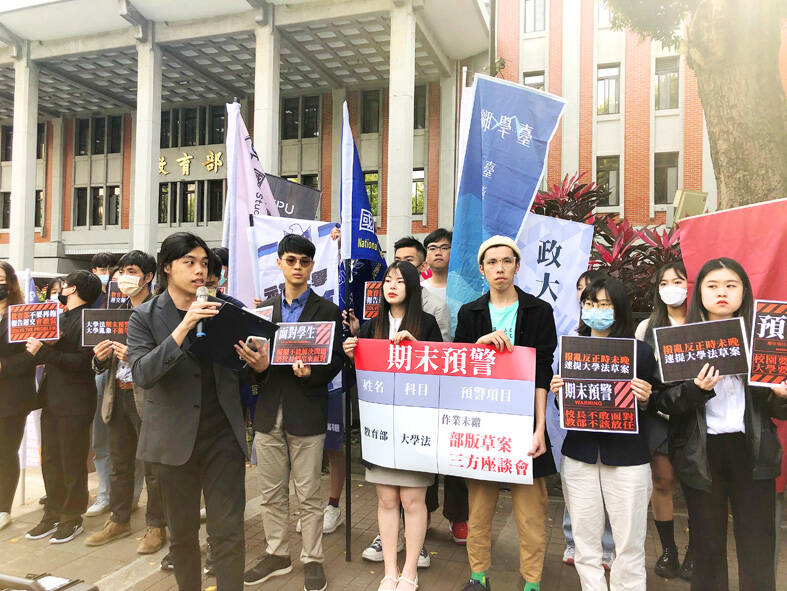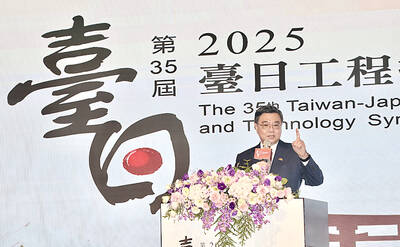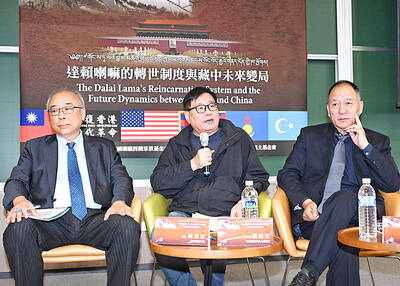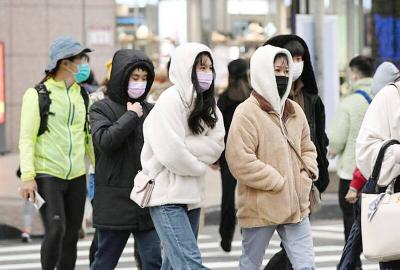University student representative groups on Monday last week protested the postponement of a draft amendment to the University Act (大學法), which would increase student representation in university councils to 20 percent from 10 percent.
Some of those protesting in front of the Ministry of Education speculated that university presidents pressured the ministry to put the amendment on hold.
Members of the National Students’ Union of Taiwan were among those at the protest.

Photo: Rachel Lin, Taipei Times
University presidents are being “giant babies” and the ministry should hasten the amendment’s passage, union secretary-general Huang Ting-wei (黃亭偉) said.
Union president Liu Yao-Wei (劉曜維), who studies at Yuan Ze University, said that capping student representation at 10 percent turns student voices into “white noise” at council meetings.
When meetings are held that affect students’ studies and well-being, school administration limits the representatives allowed to attend, despite others wanting a say on matters, Liu said.
National Taipei University of Technology student council deputy speaker Chao Yuan heng (趙元亨) said some university presidents oppose increasing student representation because student turnover is high.
However, university presidents have a term of four years, and council representatives have a term of one year, Chao said.
National Dong Hwa University student council president Chen Yen-ling (陳彥伶) said students comprise 90 percent of the campus populations, but with only 10 percent representation in university councils, proposals from students often hit obstacles.
Only by increasing student representation on the councils can “teacher-student cogovernance” be realized, United Student Union of North Taiwan deputy chairperson Feng Hui-lun (馮輝倫) said.
Union of Private School Educators president Yu Jung-hui (尤榮輝) said that the legislature should proceed with a review of the amendment regardless of whether the ministry forwards it.
Department of Higher Education deputy head Liang Hsueh-cheng (梁學政) met with the groups and received a student petition.
The ministry has held nine discussions on the issue from September to November last year, and is seeking common ground between all stakeholders before moving forward with the amendment, Liang said.

ALIGNED THINKING: Taiwan and Japan have a mutual interest in trade, culture and engineering, and can work together for stability, Cho Jung-tai said Taiwan and Japan are two like-minded countries willing to work together to form a “safety barrier” in the Indo-Pacific region, Premier Cho Jung-tai (卓榮泰) yesterday said at the opening ceremony of the 35th Taiwan-Japan Modern Engineering and Technology Symposium in Taipei. Taiwan and Japan are close geographically and closer emotionally, he added. Citing the overflowing of a barrier lake in the Mataian River (馬太鞍溪) in September, Cho said the submersible water level sensors given by Japan during the disaster helped Taiwan monitor the lake’s water levels more accurately. Japan also provided a lot of vaccines early in the outbreak of the COVID-19 pandemic,

Kaohsiung Mayor Chen Chi-mai (陳其邁) on Monday announced light shows and themed traffic lights to welcome fans of South Korean pop group Twice to the port city. The group is to play Kaohsiung on Saturday as part of its “This Is For” world tour. It would be the group’s first performance in Taiwan since its debut 10 years ago. The all-female group consists of five South Koreans, three Japanese and Tainan’s Chou Tzu-yu (周子瑜), the first Taiwan-born and raised member of a South Korean girl group. To promote the group’s arrival, the city has been holding a series of events, including a pop-up

TEMPORAL/SPIRITUAL: Beijing’s claim that the next Buddhist leader must come from China is a heavy-handed political maneuver that will fall flat-faced, experts said China’s requirement that the Dalai Lama’s reincarnation to be born in China and approved by Beijing has drawn criticism, with experts at a forum in Taipei yesterday saying that if Beijing were to put forth its own Dalai Lama, the person would not be recognized by the Tibetan Buddhist community. The experts made a remarks at the two-day forum hosted by the Tibet Religious Foundation of His Holiness the Dalai Lama titled: “The Snow Land Forum: Finding Common Ground on Tibet.” China says it has the right to determine the Dalai Lama’s reincarnation, as it claims sovereignty over Tibet since ancient times,

Temperatures in some parts of Taiwan are expected to fall sharply to lows of 15°C later this week as seasonal northeasterly winds strengthen, the Central Weather Administration (CWA) said today. It is to be the strongest cold wave to affect northern Taiwan this autumn, while Chiayi County in the southwest and some parts of central Taiwan are likely to also see lower temperatures due to radiational cooling, which occurs under conditions of clear skies, light winds and dry weather, the CWA said. Across Taiwan, temperatures are to fall gradually this week, dropping to 15°C to 16°C in the early hours of Wednesday